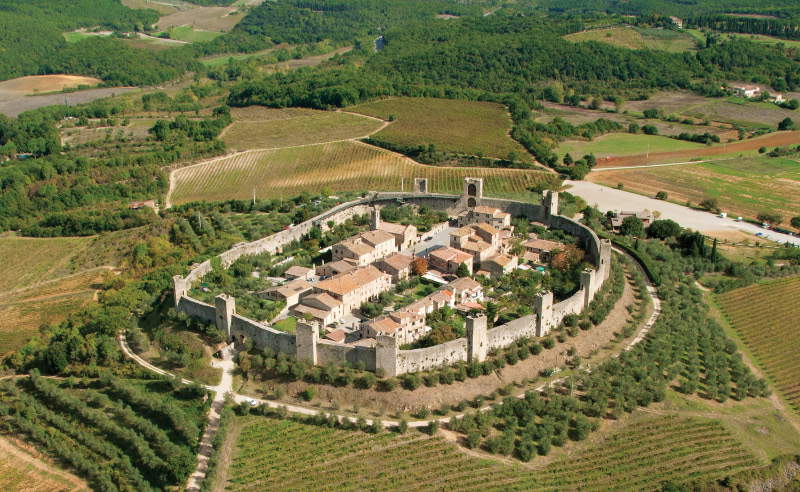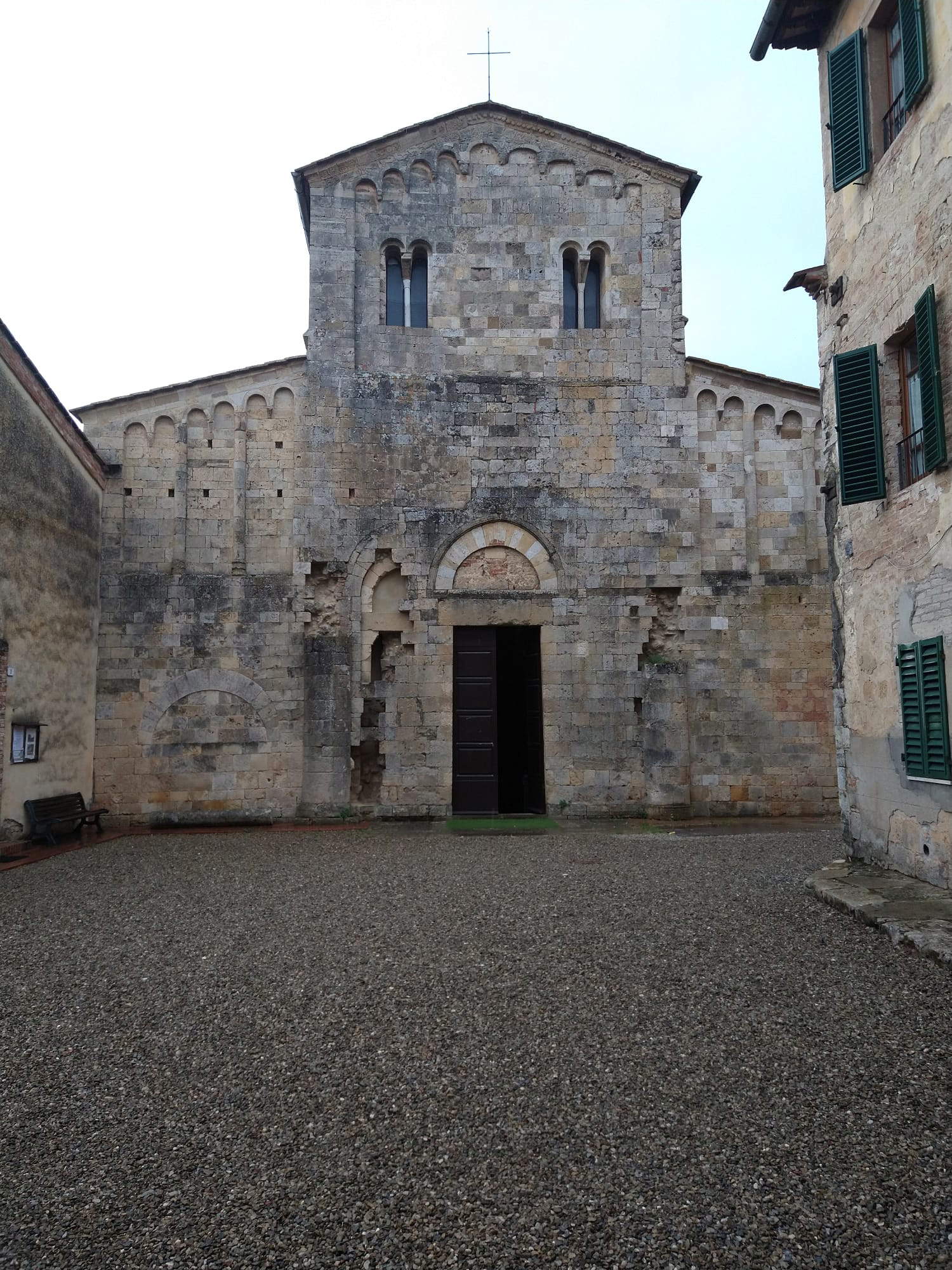The first museum in the small fortified village on the outskirts of Siena opens in Monteriggioni . Last Saturday, in fact, the Monteriggioni Archaeological Museum (MaM) was inaugurated, offering the public a journey back in time through the history of Monteriggioni, starting from the Middle Ages and ending with Protohistory, with constant reference to the territorial sphere of the Val d’Elsa and to more general themes. Set up at the Monumental Complex of Abbadia Isola, a hamlet that lies at the foot of the hill on which the village stands (Monteriggioni Castello), the museum finds space in the Sale della Tinaia and Sigerico, and is a tour that unravels between the exterior and interior of the Monumental Complex, where special panels frame its historical events as well as illustrate the low medieval burial ground (made visible) identified by archaeological excavations. The MaM aims to be the engine of a new season of research, strongly devoted to the enhancement of cultural heritage and local excellence.
The premises of the Tinaia constitute theaccess to the visit, introducing directly both to the layout of the Cloister and the Church and to the rooms located on the upper floor; in the three rooms, in succession, it is possible to retrace the history of the abbey and its cloister, as well as to see the reconstruction of an exponent of the Franzesi family (the last lords of Staggia influential on Abbadia a Isola) buried with her jewels in the cloister itself. Abbadia a Isola was founded in 1001 by the lords of Staggia, the nearby castle in the municipality of Poggibonsi. The complex was built in a swamped area located at the crossroads of the four committees of Florence, Fiesole, Siena and Volterra on an important stretch of the Via Francigena, at the confluence of secondary links to Florence and Volterra. The abbey, conceived as an instrument of patrimonial consolidation for the founding family, underwent great expansion between the 11th and 14th centuries, with the acquisition of lands and castles, strengthening its function of control over the territory; it was included by the Sienese in the system of castles placed at the borders of the contado so it was fortified in 1376.
In the Sigerico Hall, the display continues from the Roman Age to Protohistory, with a prominent place attributed to the tomb of the Calisna Åšepu, from the Casone necropolis, found in 1893 in podere Malacena, whose grave goods, following antiquarian events, are between the National Archaeological Museum in Florence, the Archaeological Museum “Ranuccio Bianchi Bandinelli” in Colle di Val d’Elsa, the Guarnacci Etruscan Museum in Volterra, the Antikensamlung in Berlin, the Pushkin Museum in Moscow and private collections. In the absence of the entire collection, in an attempt to reconstruct the importance and richness of the context, it was decided to set up an environment that combines the display of the materials and reconstructions of some moments in the history of this fundamental context, illustrated (as are all the graphic reconstructions present) by the Inklink studio in Florence.
This section also features a reconstruction of the so-called “Chiostraccio Man”; this is a skeleton found in 1962 and considered for years the oldest known Tuscan man, having been dated to over 15,000 years old. Today, thanks to new analyses (carbon 14 and DNA), it has been possible to establish that he did not live in the Paleolithic age, but Etruscan. Therefore, in order to explain the different study methodologies that led to these results, it was decided to propose a facial reconstruction of the find, with an explanation of the techniques that specified its dating and framing.


“Abbadia a Isola, with this operation, is destined to become a pole of excellence that will stand alongside the Castle as a major attraction on a regional, national and international level,” says Monteriggioni Mayor Andrea Frosini. “Monteriggioni has a territory and a community highly vocated to the preservation and enhancement of its identity, made above all of History. This is the direction in which the efforts of the Municipal Administration go, especially in the maintenance of this great heritage. The museum, in this sense, is an excellent example of this forward-looking vision; in fact, it is the place where the memory of our historical and cultural identity is preserved. It will, therefore, be a center of cultural promotion dedicated to the history of Monteriggioni, with the aim of organizing regular events and activities in which education, knowledge and entertainment will be combined, aimed at bringing the facility to life all year round.”
Next steps will be the completion of the latest restoration work, the activation of a state-of-the-art conference room and other innovations designed to strengthen the role of the Monumental Complex as a culture-producing hub that will live 365 days a year.
“It was necessary and ethically correct as administrators to commit ourselves to deliver to Monteriggioni a museum, the first in this municipality,” says Culture and Tourism Councillor Marco Valenti. “Today the territory can, therefore, boast the Monteriggioni Archaeological Museum. A structure that will be at the service of the population and visitors, but will also conduct research, collect, preserve, interpret and exhibit material and intangible heritage. A museum that will develop a healthy sense of identity and belonging. It was born from the synergy between the municipal administration, the Soprintendenza Archeologia Belle Arti e Paesaggio for the Provinces of Siena, Grosseto and Arezzo, and also the Fondazione Musei Senesi. It represents a first step in an ongoing project in which both the municipal offices in charge (in particular Culture and Public Works) and the company Monteriggioni AD 1213 have worked chorally and in an exemplary way. We would especially like to thank the Guarnacci Museum in Volterra, the Pinacoteca in Siena and the Ranuccio Bianchi Bandinelli Museum in Colle Valdelsa for their active collaboration.”
 |
| Monteriggioni has its first museum: it is the MaM - Monteriggioni Archaeological Museum |
Warning: the translation into English of the original Italian article was created using automatic tools. We undertake to review all articles, but we do not guarantee the total absence of inaccuracies in the translation due to the program. You can find the original by clicking on the ITA button. If you find any mistake,please contact us.